Free goods determination in SAP SD (Sales and Distribution) is a feature that allows businesses to offer products free of charge under certain conditions, enhancing sales strategies and customer satisfaction.
In SAP SD, free goods can be set up as either inclusive or exclusive.
- Inclusive free goods are part of the order quantity (e.g., buy 10 get 1 free, customer pays for 9).
- Exclusive free goods are additional to the order quantity (e.g., buy 10 get 1 free, customer pays for 10 and gets 11).
Free Goods Determination in SAP SD – Configuration
-
- Go to: Logistics → SD → Master Data → Conditions → Free Goods → Create.
- Use transaction code VBN1.
- Specify the validity period, minimum order quantity, and the quantity for which free goods will be given.
Setting Up Free Goods Determination:
-
- Define a condition table (e.g., Table 10 for Sales Organization, Distribution Channel, Customer, and Material).
- Create an access sequence and assign condition tables to it.
- Define a condition type for free goods and assign the access sequence.
- Set up a pricing procedure for free goods and assign condition types.
Creating Condition Records for Free Goods – VBN1
To create condition records for free goods in SAP, navigate to VBN1, enter the condition type for free goods(NA00), and specify details like the material, customer, minimum quantity, and free goods quantity. Set the validity period, then save the record. This process defines the criteria under which free goods are offered in sales orders.
- Enter Discount type as NA00.
- Now select your key combination, here we selected criteria based on Customer / material and click on Okay.
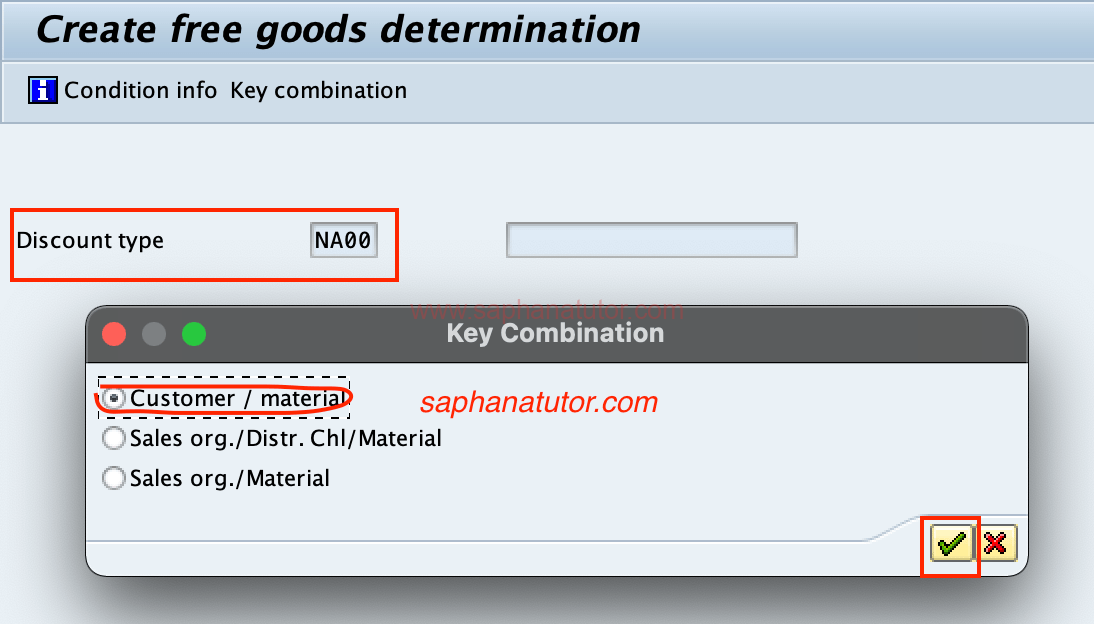
Free Goods Determination in SAP SD incentivizes bulk purchases by offering extra items at no cost, based on predefined conditions. The configuration shown indicates an “inclusive” setup, where free items are part of the total order count.
It’s set for a specific customer and material (“DAMRO TABLE”) with a minimum order quantity trigger. The free goods scale up with the order volume, calculated at 1% of the ordered amount. This automated promotion, valid on a specific date, ensures consistency in sales deals and simplifies order processing by auto-applying discounts for qualifying orders.
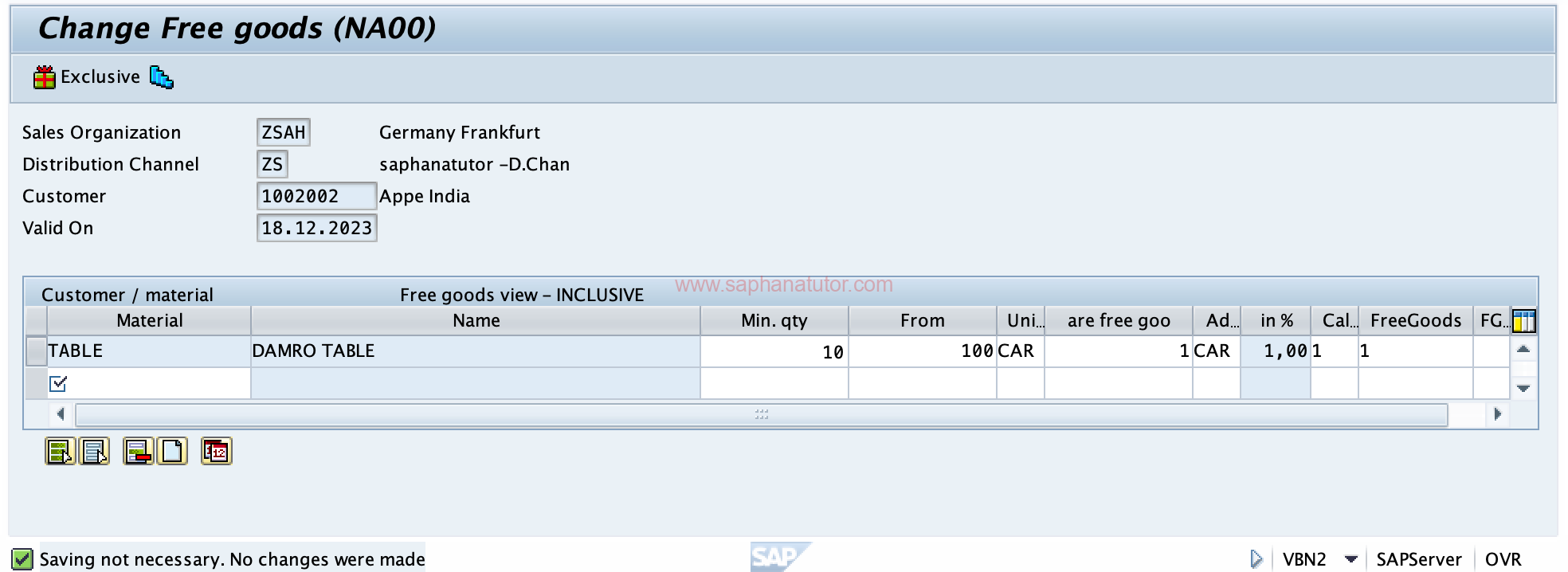
- Condition Technique:
- This technique is used to determine free goods based on levels like customer/material level.
- In standard SAP, conditions are usually maintained at the customer/material level.
Activating Free Good Determination
Free Goods Determination in SAP SD feature is currently limited to sales order types with document category ‘C. At this time, the system is not designed to facilitate complimentary product allocation for pre-sales documents such as inquiries and quotations.

| Transaction Code | Description |
|---|---|
| V/N2 | Maintain Condition Tables |
| V/N3 | Maintain Access Sequences |
| V/N4 | Maintain Condition Types |
| V/N5 | Maintain Pricing Procedures |
| VBN1 | Create Condition Records for Free Goods |
| VA01/VA02 | Sales Order Processing |
Example Scenario:
Assume you want to offer a promotion where for every 100 units of Product A sold in sales area ZSAH, ZS, ZS, the customer gets 1 unit of Product B free.In VBN1, create a condition record for Product A specifying the minimum order quantity (20 units) and the free goods (1 unit of Product B).Ensure that the condition record is valid for the specified sales area and period.
Testing the Configuration:
Now we will Create a sales order in the specified sales area for Product “table” and check if the system automatically adds the free product to the order based on the defined conditions.
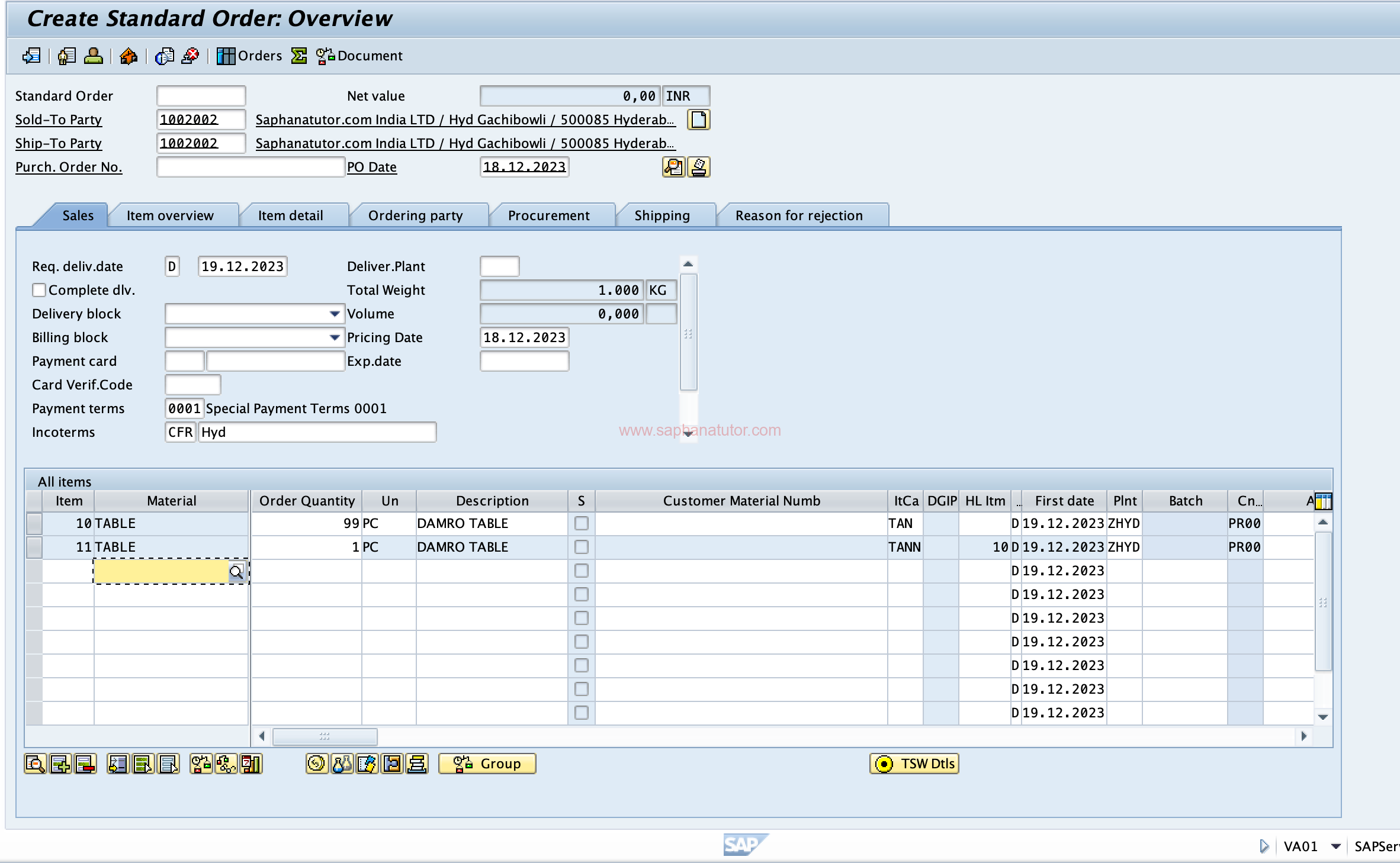
Difference between TAN and TANN Item Category
| Feature | TAN | TANN |
|---|---|---|
| Full Name | Standard Item | Free of Charge Item |
| Usage | Used for regular sales order items that are billed and delivered. | Used for items that are given free of charge, often in promotions or as samples. |
| Billing Relevance | TAN items are relevant for billing. They are invoiced to the customer. | TANN items are typically not relevant for billing as they are free. |
| Delivery Relevance | TAN items are relevant for delivery and are included in the delivery document. | TANN items are also relevant for delivery and included in the delivery document, despite being free. |
| Pricing | Pricing conditions are applied. The item has a price that is calculated based on the pricing procedure. | Pricing conditions usually result in a zero price. The item is not charged to the customer. |
| Inventory Impact | TAN items impact inventory levels as they are considered sold. | TANN items also impact inventory levels as they are physically delivered, even though they are not sold. |
| Typical Use Case | Regular sales orders where goods are sold at a price. | Promotional items, samples, or bonus goods provided alongside a standard sale. |
- Pricing conditions are applied. The item has a price that is calculated based on the pricing procedure.
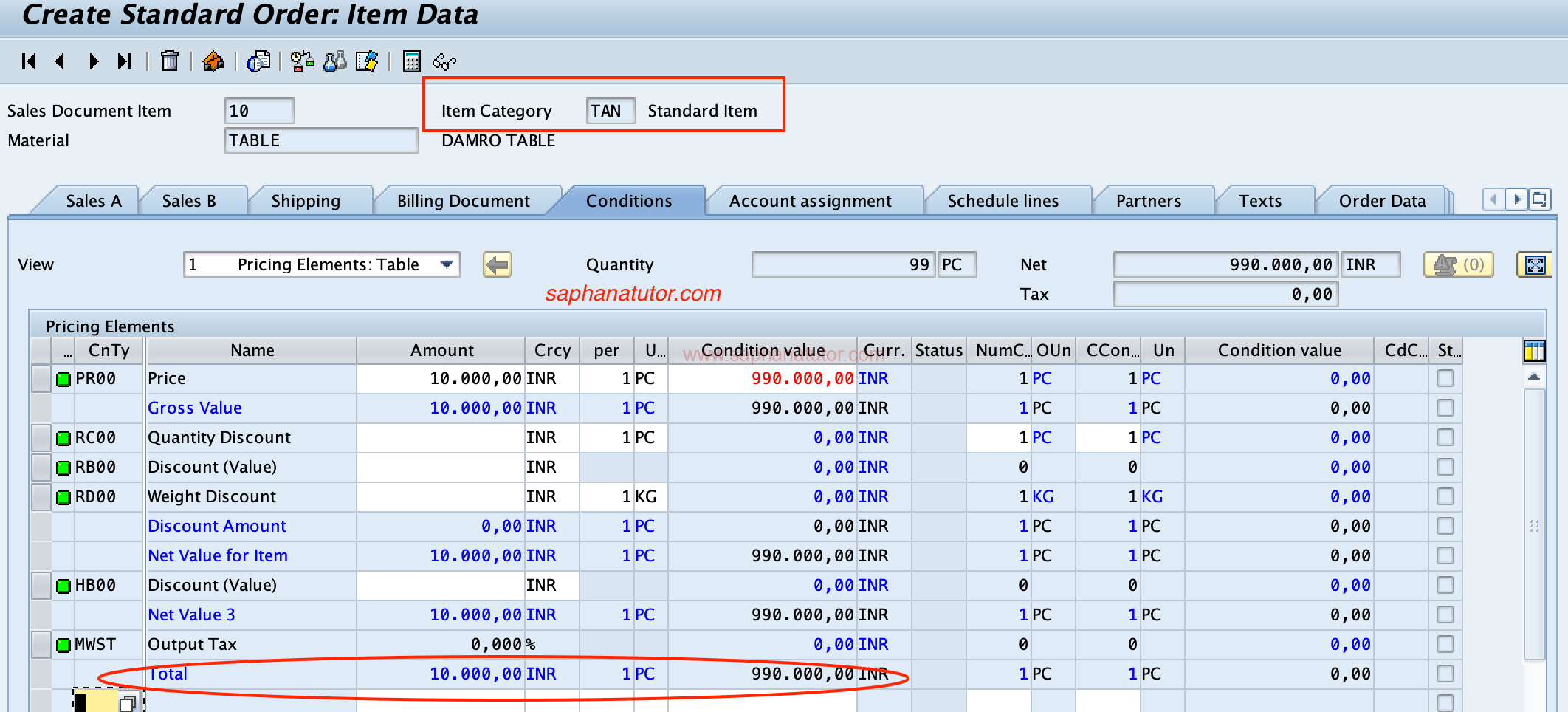
- Pricing conditions usually result in a zero price. The item is not charged to the customer
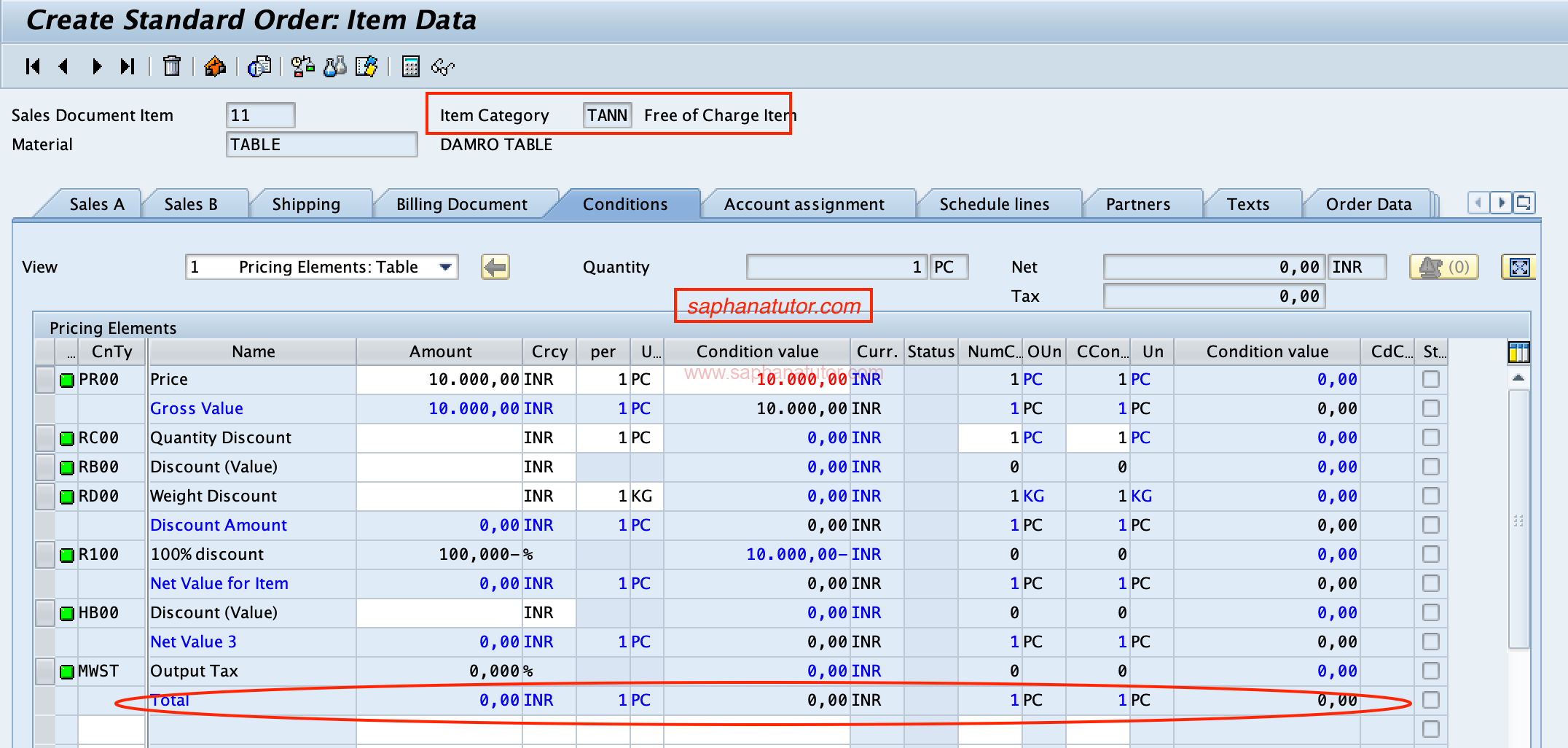
This process ensures that when a sales order meets the specified criteria in your sales area, the system automatically applies the free goods determination, enhancing the efficiency of sales promotions and customer incentives.
Interview Questions and answers on Free Goods Determination
Q1: What are the two types of free goods in SAP, and how do they differ?
Answer: In SAP, free goods are categorized into two types: Inclusive Free Goods and Exclusive Free Goods. Inclusive Free Goods are part of the order quantity, where the customer is charged for a portion of the goods, and a part is given free. For example, in a ‘Buy 10 get 1 free’ policy, the customer pays for 9 and gets 1 free, receiving a total of 10 items. Exclusive Free Goods, on the other hand, are additional to the order quantity. Using the same policy, the customer pays for 10 items and receives an extra one for free, totaling 11 items. Exclusive Free Goods can also include different materials from the ordered ones.
Q2: Can you explain the role of condition technique in determining free goods in SAP?
Answer: The condition technique in SAP is used to determine free goods based on appropriate levels, such as customer/material level or customer hierarchy/material level. In the standard SAP system, conditions are typically maintained at the customer/material level. This technique involves creating conditions as master data, which are then copied into sales documents. The transaction code for maintaining this master data is VBN1.
Q3: What are the limitations of free goods configuration in SAP?
Answer: There are several limitations to the free goods configuration in SAP. Firstly, free goods can only be supported on a 1:1 ratio, meaning for each ordered item, only one different item can be given free. Combinations with material structures, such as product selection or BOM variants, are not supported. Free goods are only applicable for sales orders with document category C and are not supported for deliveries without reference to a sales order. Additionally, free goods cannot be used for certain special business processes like MTO, TPO, or Scheduling Agreements.
Q4: Describe the process of maintaining master data for free goods in SAP.
Answer: Master data for free goods in SAP is maintained through a specific path in the Logistics -> SD -> Master Data -> Conditions -> Free Goods -> Create. The transaction code is VBN1. In the master data maintenance, various details like the condition type, inclusive or exclusive nature of the free goods, validity period, minimum order quantity, and calculation rules are specified. This data is crucial for the correct application of free goods in sales orders.
Q5: How is the pricing procedure related to free goods configuration in SAP?
Answer: The pricing procedure in SAP, in the context of free goods, is a collection of desired condition types along with other control features. It is also referred to as the Free Goods Procedure. This procedure determines how free goods are priced and applied in sales transactions. The standard free goods procedure in SAP is identified by the NA0001 code, which includes the condition type NA00.
